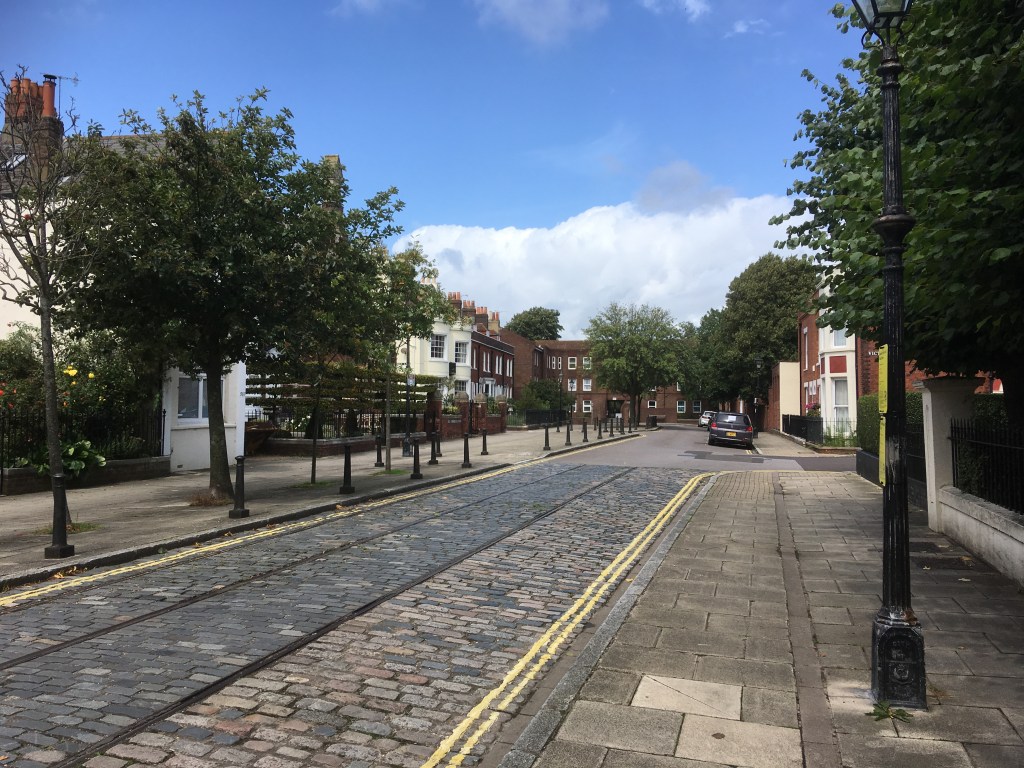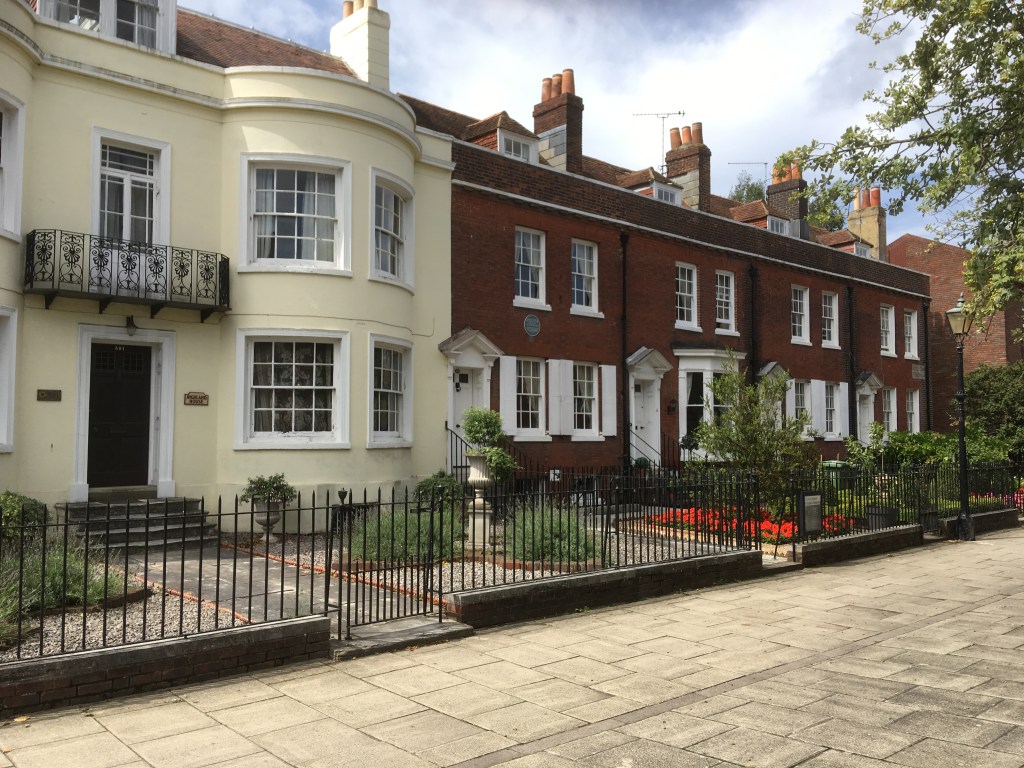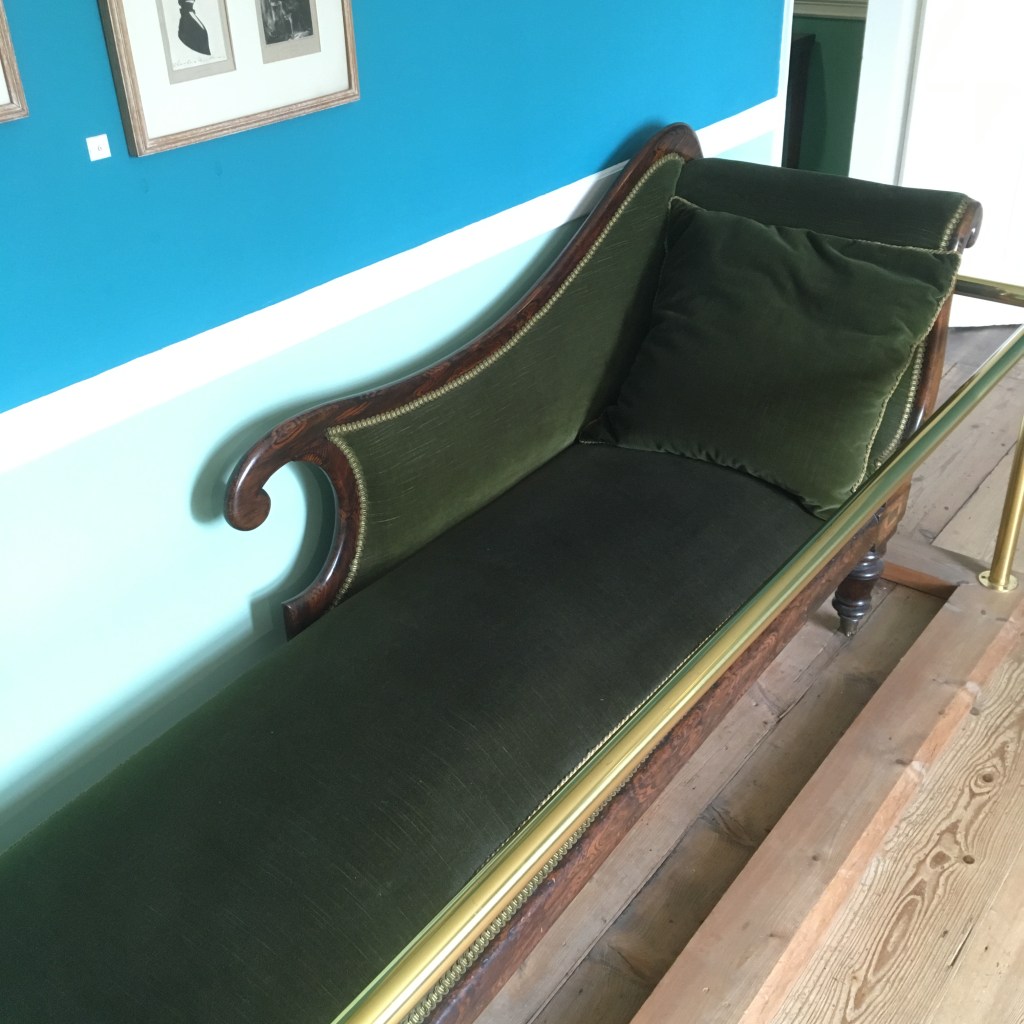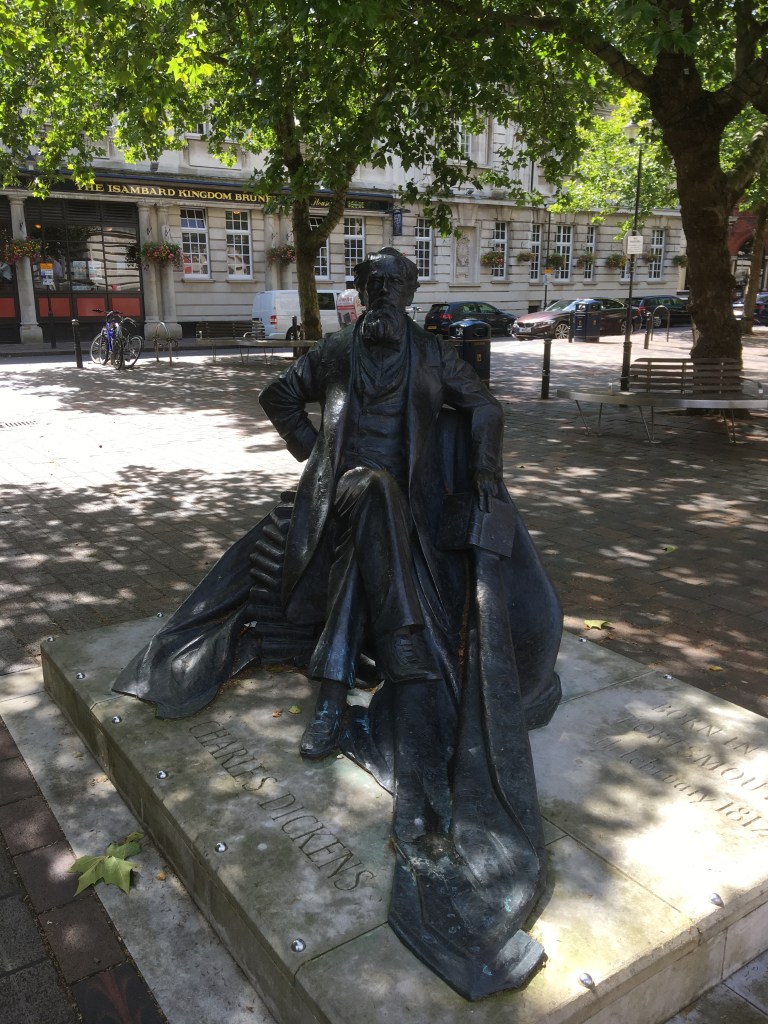Aside from the obvious Austen connection, I had found little else in Southampton to interest the literary traveller. Everything I read about Portsmouth, however, turned up new literary avenues to explore.
Nevil Shute Norway was an aircraft engineer, Founder of the Airspeed factory which moved to Portsmouth airport in 1933. It was later bought by De Havilland, for whom Norway worked, on anti-submarine missiles, during the Second World War. He later dropped the ‘Norway’ and became known for his post-war romances, such as The Far Country and A Town Like Alice. He lived in several houses in the city and the surrounding villages, some of which you can still see today.
Neil Gaiman, the much loved sci-fi and fantasy author, was born in Portchester in 1960. There is a road in Porstmouth named after one of his novels; The Ocean at the End of the Lane is appropriately close to the sea, between boating lake and pier. It was named in the author’s honour by Portsmouth council in 2013, with the intention of “putting Portsmouth on the book lover’s map.”

Olivia Manning, author of the Epic Fortunes of War series was also born in Porstmouth, in the North End area of the city, in 1908. Rudyard Kipling spent part of his childhood in Portsmouth and Arthur Conan Doyle had a medical practice here, shortly after qualifying. It proved to be so unsuccessful that he began to write just to pass the time. It was the city’s most famous writer that I was here to see today. Charles Dickens was born in Portsmouth in 1812 and his family home is now a small museum.

The museum is set in a beautiful, leafy little street. There is a small carpark at one end, where charges are amazingly cheap but, as I live in Cambridge, I find all car-parking charges cheap by comparison. The street is lined with lime trees, and Victorian cast iron lamp-posts, and cobbled for most of its length. There is an old, and sadly closed and repurposed, pub on the corner and, at one end, the ancient tramlines are still visible. Next door to a stately Georgian double bow fronted house is a brick terrace, one of which was the Dickens family’s humble abode. There are some more modern buildings around as, like Southampton, Portsmouth is a major south coastal port and was heavily targeted by the Luftwaffe. This remnant of commercial road must have been far enough from the docks to survive destruction; other parts of the City were not so lucky.

The Dickens family had been living in this house since 1809 when Charles was born in 1812. He was only about two-and-a-half years old when they relocated to London. Even so, he remained close to Portsmouth and Dickens holds a special place in Portsmouth’s heart: they are justly proud of their literary son. They are also proud of their naval heritage and Charles’s father, John Dickens, was a naval clerk, working in the pay office. The fact that he was not particularly well-paid was to be an issue for the family in later years.

The museum is entered through the basement, where there is a small shop and some of the original kitchen fittings from the period when the Dickenses lived here. Elsewhere, the building is furnished and decorated as a fine example of a Regency-era, lower-middle class family home. The colours have been chosen to match how the house would have originally been decorated. I particularly liked the dining room, with table set for a formal dinner with period tableware and glassware, and the bedroom in which Charles was born.
Dickens’s presence is strongly felt: there and there are portraits and busts of him throughout the building and some of the artefacts on show include Dickens’s personal possessions. There is a pair of glasses, an inkwell and a lock of his hair, that I found rather compelling. The star of their collection has to be the couch from Gadshill, however, as it was on this, in 1870, that Dickens breathed his last. They also have his death certificate on display to form a cohesive, if slightly morbid, themed display. It’s a small museum but very well worth a visit.
There is a Dickens trail around the town that starts at the museum but, as most of the points of interest indicate sites of buildings long since demolished and rebuilt, I gave it a miss for this visit. I did decide to walk down to the Guildhall to take a look at the statue there. I had been so impressed with the lovely little street in which the museum is sited that I was looking forward to discovering the rest of the town.
Oh dear. I’m afraid I had been given false hope. The rest of Commercial Road, hosting a street market on this August Saturday, was a terrible example of post-war urban planning. Dual carriageways encircle the town centre, so that, to navigate on foot one is forced into a series of rank subways. Concrete that has browned with age and square and featureless brick boxes dominate. Any buildings of character are buried beneath shopfronts: Poundland… Sports Direct… Subway…, and there is very little of local character. Whilst I understand that we need cheap, convenient places to park, there must be a better way than swamping every town centre with concrete car parks and imprisoning it in a net of dual carriage-ways. We need to find other ways of getting people into town centres. I understand that there are plans to redevelop the town and these are long overdue.

Finally, I arrived at Guildhall square, which is a much nicer part of the town, lined with trees and dominated by the Guildhall: a magnificent colonnaded Victorian neo-classical building, guarded by lions and surmounted by domes and a clock – each in its own way a symbol of Victorian commerce and prosperity. Dickens’s statue stands just below the Guildhall steps, shaded by the trees on the South side of the square. Mr. Dickens, cast in bronze, reposes upon a pile of books, is slightly larger than life, which gives him an air of authority without making him look austere. It was designed by Martin Jennings, who also made the statue of Sir John Betjeman in St. Pancras station that I rather like. The Dickens statue was unveiled, by the youngest member of the Dickens family (9yo Oliver) in 2014, on the 202nd anniversary of the author’s birth.
I stood to admire the statue for a while, reflecting on how Dickens, while far from perfect in his own opinions, had, at least, brought the inequality and deprivation of the Victorian age to the attention of his middle-class audience. He may have changed people’s minds and, in his own way, made a difference to society. There was an evangelical preacher in the square, bellowing the good news about Jesus at the top of his voice. But no-one was listening to him.

Leave a comment